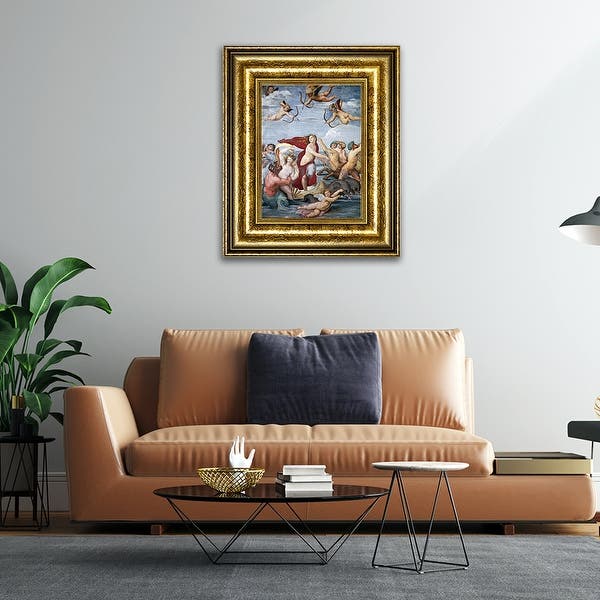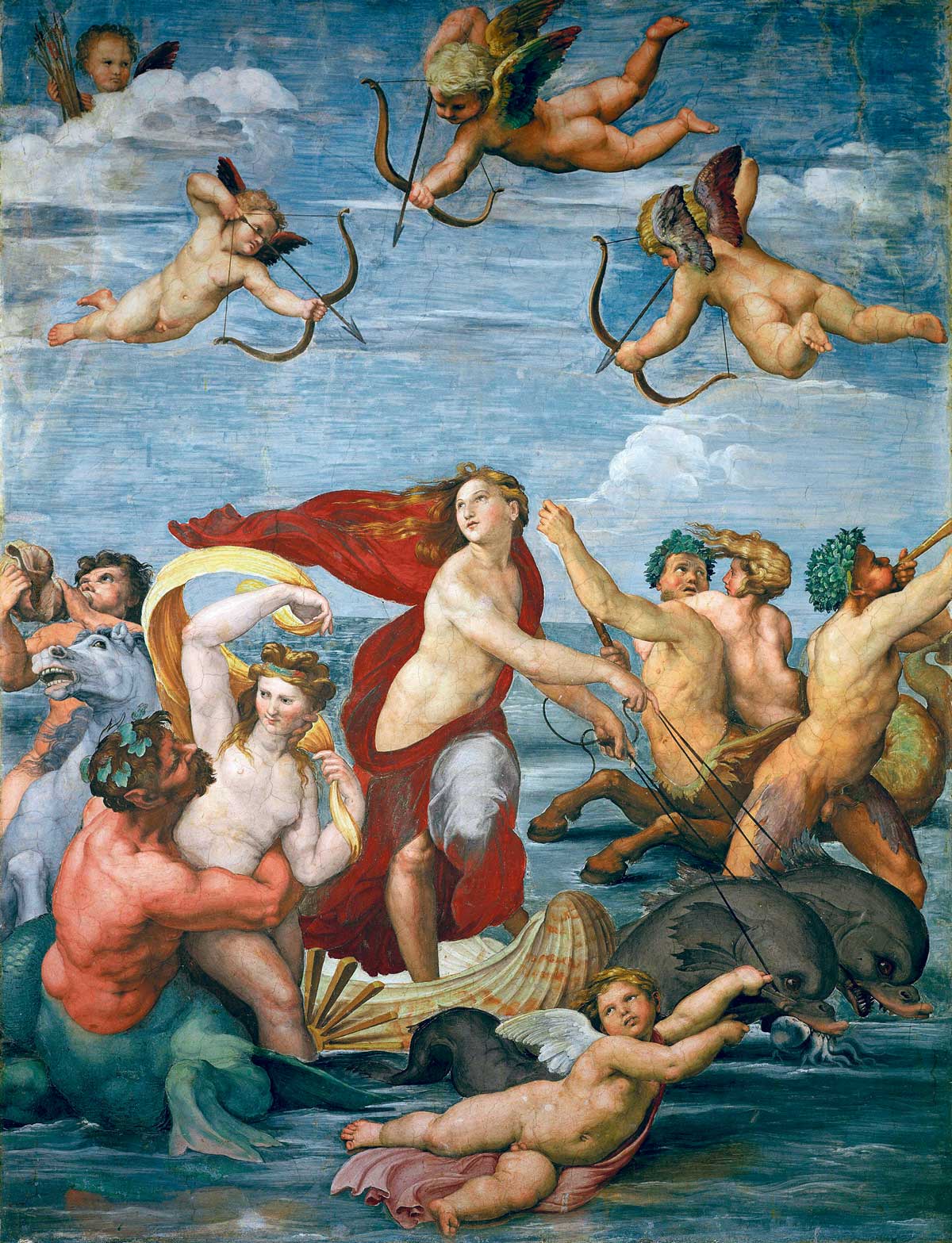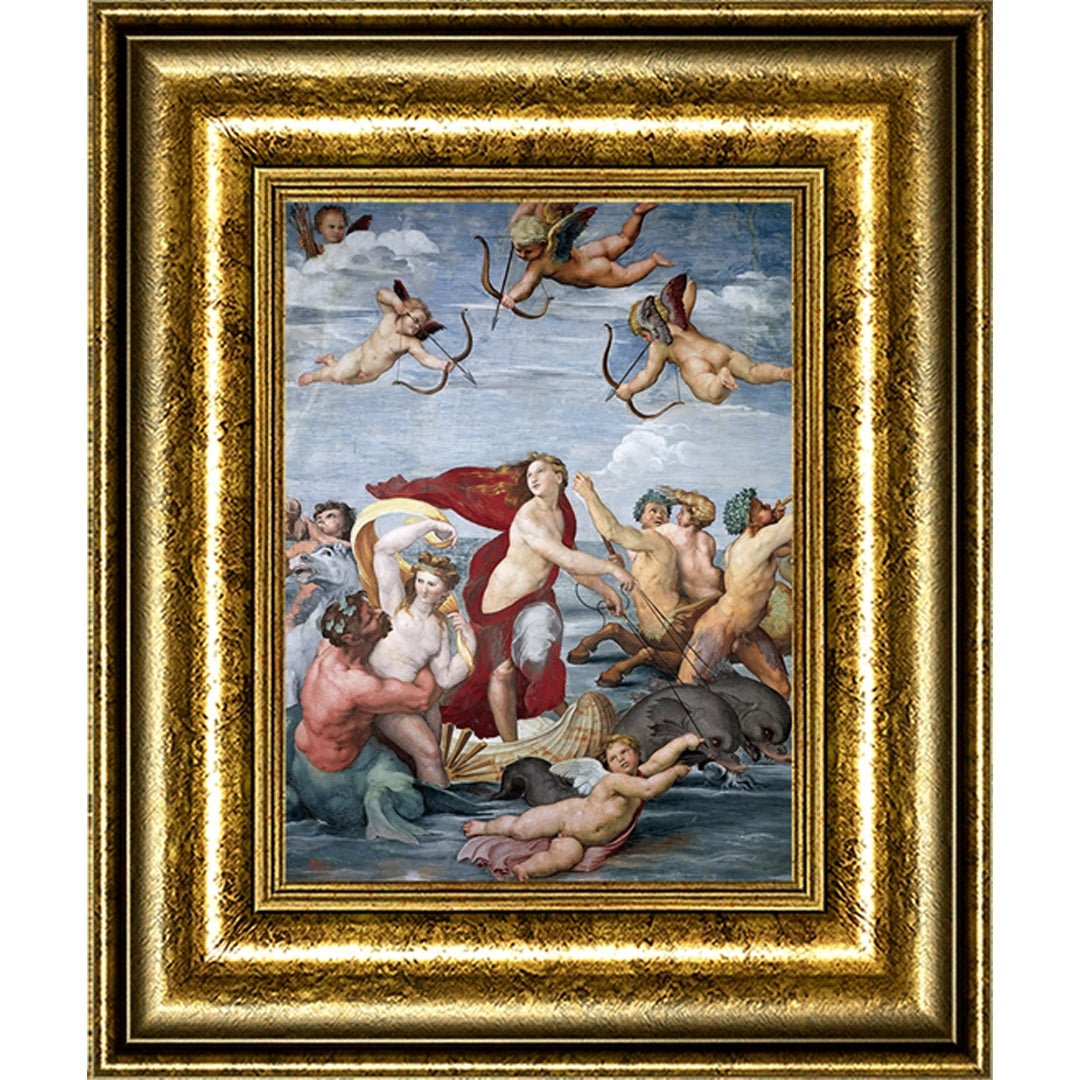Description
Raphael's The Triumph of Galatea, a fresco created around 1512 for the Villa Farnesina in Rome, depicts a scene later in the life of the Nereid, when Galatea triumphs in a chariot of shells pulled by dolphins.
In Greek mythology, Galatea (meaning "she who is white as milk") is a sea nymph known as Nereid. Although she had appeared in other classical Greek tales, the story of Galatea and Acis first appeared in Ovid's Metamorphoses. She falls in love with Acis, a beautiful mortal shepherd who is the son of Faunus, god of the forest and the river nymph Symaethis. Although her heart belongs to Acis, Galatea is also pursued by the Sicilian Cyclops Polyphemus. Polyphemus is enraged by the affair of Galatea and Acis, and strikes Acis with a stone, killing him instantly. Blood then spurts from the stone, and Galatea, distraught, turns Acis' blood into the Sicilian river Acis, where he is immortalized as a spirit.
Although the fresco is inspired by the story of Acis and Galatea, Raphael has not chosen a scene depicting the hapless lovers together. Instead, he has portrayed Galatea as she achieves apotheosis, meaning that after her death she would ascend to join the fully divine beings, as a reward for her patience and endurance of the trials and tribulations experienced in her life.
On the left of the painting, a Triton, half man and half fish, abducts a sea nymph, while another plays a conch trumpet. The work is inspired by La Giostra ("the carousel"), a work by the poet Poliziano, who was tutor to the Medici, the ruling family of Florence, and one of the great pan-European intellectuals of the time. He had begun writing La Giostra in honor of Giuliano de 'Medici's victory in a tournament in 1475. He abandoned it three years later, following the conspiracy of the Pazzi family, which attempted to overthrow the Medici as rulers of Florence, during which Giuliano was stabbed to death during high mass in the city's Duomo. Poliziano saved the life of Giuliano's brother Lorenzo by locking him in the sacristy of the Cathedral.
Raphael's fresco was commissioned for the Villa Farnesina by Agostino Chigi, an enormously wealthy Sienese banker who was treasurer to Pope Julius II. He had the villa built in the Trastevere area of Rome by Baldassarre Peruzzi between 1506 and 1510. It was acquired in 1577 by the Farnese family, whose members included Pope Paul III and Elisabeth Farnese, who became Queen of Spain in the early 18th century. The building, whose main attraction is still the fresco by Raphael, is open to the public.
The Triumph of Galatea is ranked no. 20 on the list of famous paintings




